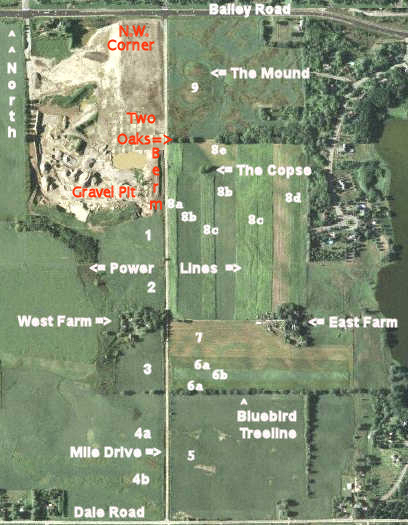
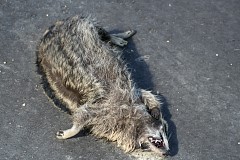 I promise to keep shots of roadkill to a minimum. Truth is, there hasn't been much, especially
on Mile Drive. This raccoon (Procyon lotor) bought it on Bailey Road just short of Mile Drive.
They are primarily nocturnal and thrive in many cities as well as wilderness areas.
They are omnivorous and eat a variety of foods, including frogs, fish, amphibians, shellfish,
insects, birds, eggs, mice, carrion, berries, nuts, vegetation, salamanders, insects,
berries, corn, cat food, and human garbage.
Return to Animals
I promise to keep shots of roadkill to a minimum. Truth is, there hasn't been much, especially
on Mile Drive. This raccoon (Procyon lotor) bought it on Bailey Road just short of Mile Drive.
They are primarily nocturnal and thrive in many cities as well as wilderness areas.
They are omnivorous and eat a variety of foods, including frogs, fish, amphibians, shellfish,
insects, birds, eggs, mice, carrion, berries, nuts, vegetation, salamanders, insects,
berries, corn, cat food, and human garbage.
Return to Animals
|
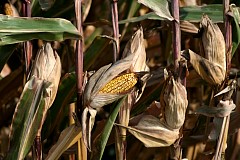
An ear of ripe corn peeks out. Farmers have to let it dry out before picking it.
If they store moist corn it will spoil.
Return to Consumables
|
|
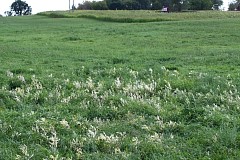
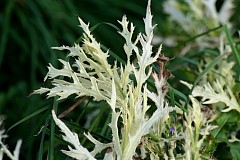
I haven't been able to identify this nettled plant.
|
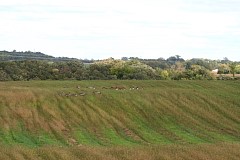
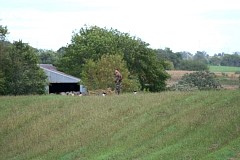
The elderly farmer lets goose hunters on his land to hunt. Here in what was the oat field
hunters have put up decoys.
|

Here flying overhead is Chopper 5 from local T.V. station KSTP.
|
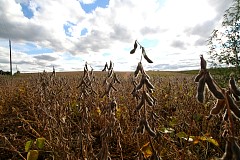
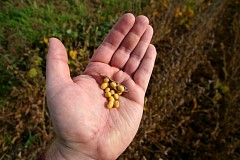
Here is a low angle shot of soybeans in a field along the road. I peeled open some
pods and display a pod and beans from several pods in my hand.
Return to Consumables
|

Today feels like fall, and it's beginning to look like it.
|
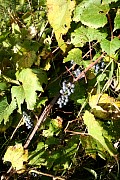
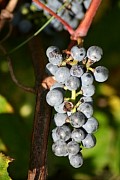
This is Frost grape or river bank grape (Vitis riparia)
Since the lobes are generally sharp-pointed and there are also
large sharp teeth along the margin.
The fruit is a cluster of round, juicy, very sour, dark blue berries that ripen in September
and October. Uses include juice, jelly, and syrup. The leaves can be used for
various middle eastern dishes such as stuffed grape leaves.
Return to Consumables
|
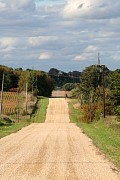
Looking down the road toward the north on an overcast day.
|
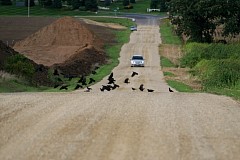
A car scatters a murder of crows. Since the feeling of fall has set in, the crows have
been collecting into a big group.
|

Looking toward the northwest corner of the intersection of Mile Drive and Bailey Road.
The terra forming has created this flat terrain, which is rumored will become athletic
fields for either the city or the new high school.
|
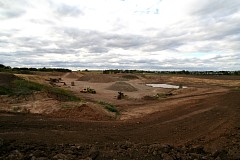
An overview of the still operating gravel pit.
|
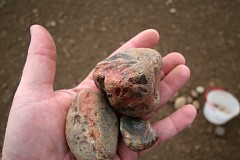
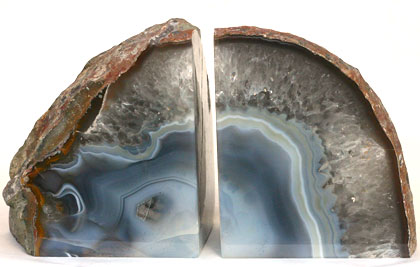
|
|
From time to time I see agate hunters in the gravel pit. The no trespassing signs are for
them, but they ignore them. Two hunters let me take pictures of the rocks they think
might turn out to be agates.
Agate is a common semiprecious silica mineral, the
most common variety of chalcedony which is a form of quartz. Agate is, in fact,
identical with quartz in composition and physical properties
(silicon dioxide (SiO2)).
Most agates occur in cavities of eruptive rocks or ancient lavas. These agates have a banded
structure, successive layers being approximately parallel to the sides of the cavity.
Varieties of agate are characterized by
peculiarities in the shape and color of the bands, which are seen in sections cut at right
angles to the layers.
Agate forms when gas bubbles trapped in solidifying lava become filled with alkali and
silica-bearing waters, which coagulate into a gel. The alkali attacks the iron in the
surrounding lava, and bands of the resulting iron hydroxide are created in the gel,
which loses water and crystallizes, leaving the bands intact. Many agates, when cut
in cross-section, reveal striking forms.
|
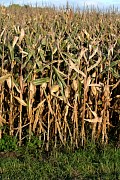
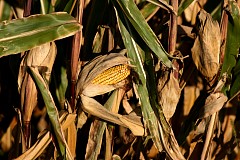
Corn in Field #9. If you enlarge the picture on the right you will see the cornsilk at the
end of the ear has
turned a very dark brown.
|
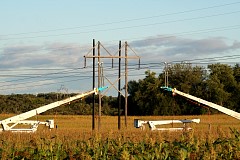

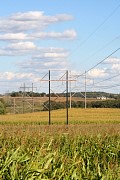 The crew showed up and over several days has replaced a tower on the 115 kv high voltage line.
I believe I recall the crew told me that the line would be shut down when they went
to work on it, they didn't have to worry about working on a live line. Of course, they have
to support the line so it doesn't sag and put strain on other towers, perhaps breaking
off insulators.
The crew showed up and over several days has replaced a tower on the 115 kv high voltage line.
I believe I recall the crew told me that the line would be shut down when they went
to work on it, they didn't have to worry about working on a live line. Of course, they have
to support the line so it doesn't sag and put strain on other towers, perhaps breaking
off insulators.
|
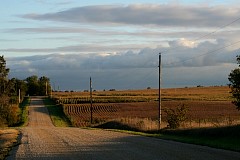
Soon this rural splendor will be replaced by housing tracts. It's remarkable that, so close
to a huge urban area, it still exists and for now I am able to access it.
|